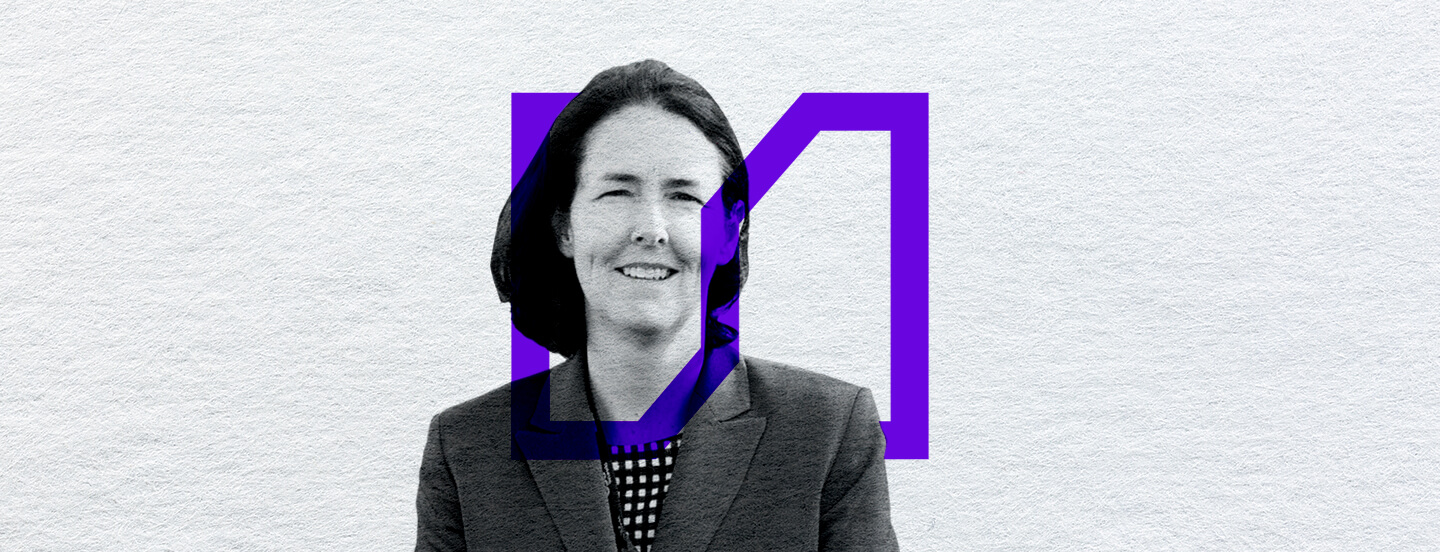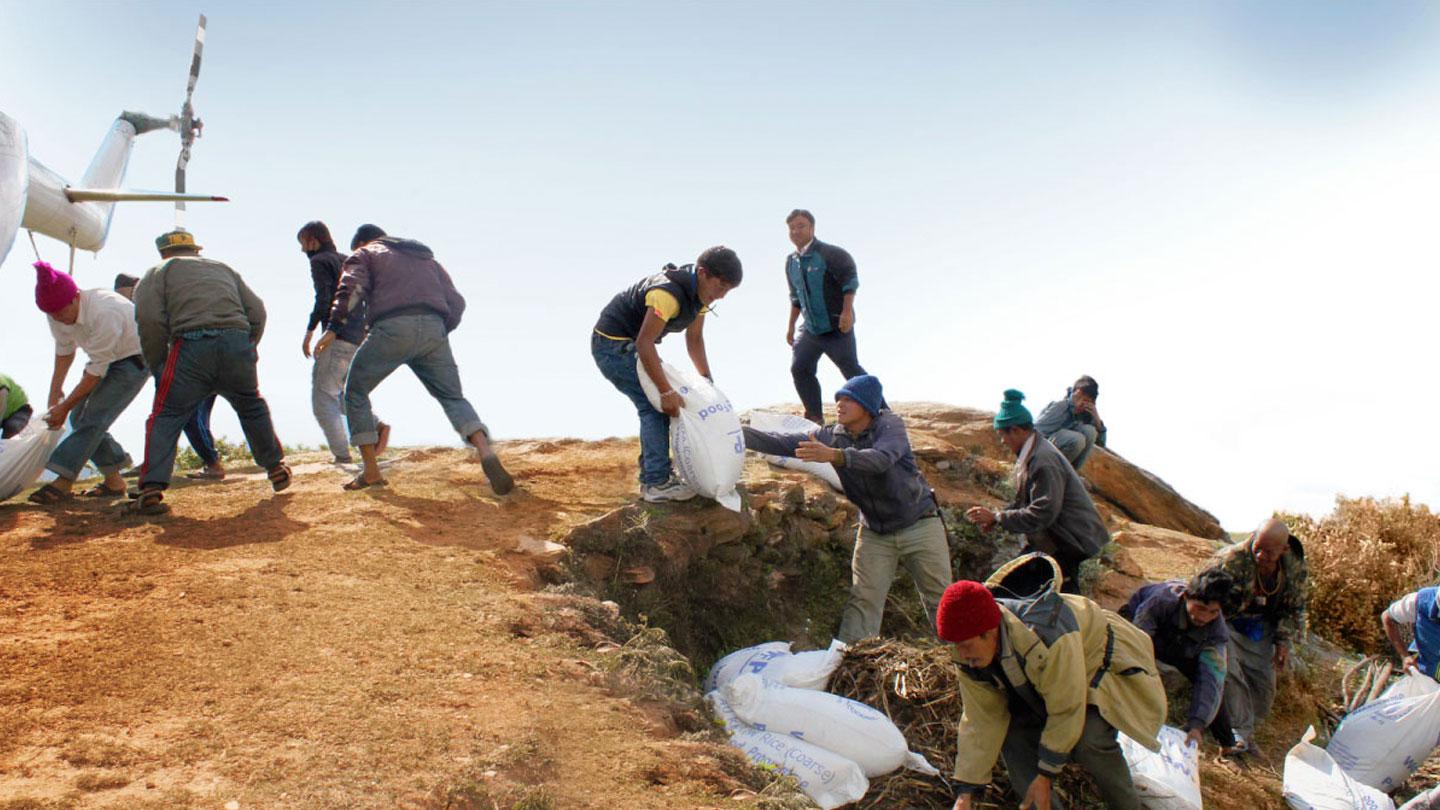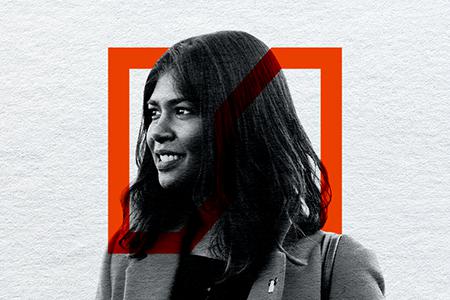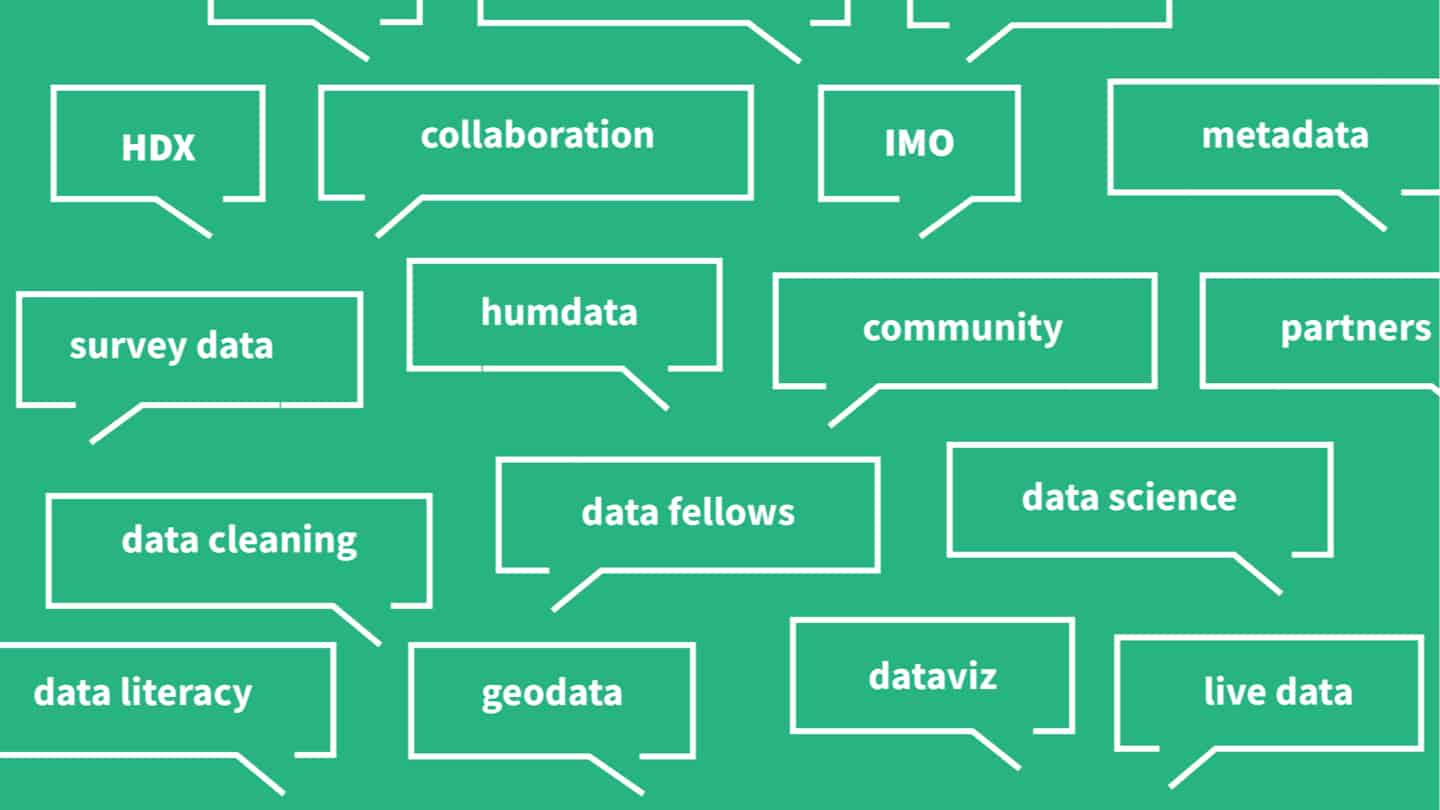
设计人道数据
On this episode of the Design Mind frogcast, we’re joined by Sarah Telford, Lead of the UN OCHA Centre for Humanitarian Data, to talk about how her team is connecting people and data to save lives.
The Centre for Humanitarian Data is a team within UN OCHA (Office for the Coordination of Humanitarian Affairs)—the part of the United Nations that coordinates global emergency response in times of crisis. Since 2014, Sarah has led a team creating data products and services to further this mission.
frog has been working with the Centre from the start, partnering to design and launch its signature product, the Humanitarian Data Exchange (HDX). In 2020, HDX saw a record level of engagement spurred by the COVID-19 pandemic. Sarah shares what the Centre is doing to make COVID-19 data more accessible and more useful for humanitarians in the field and at headquarters. You’ll also learn what drove her own interest in crisis data, how she’s incorporating human-centered design thinking into the Centre’s core workstreams, and what she’s learned about the creative process.
Listen to the podcast episode and find transcripts below. You can also find the episode on Apple Podcasts, Spotify and most other podcast players.
Episode Transcript:
Design Mind frogcast
Designing Data for Humans in Times of Crisis
Guest: Sarah Telford, Lead, UN OCHA Centre for Humanitarian Data
Episode 6
[01:37]
When I finished school, I wanted to work in book publishing. My first job was with Time Warner. I focused on foreign rights, so I was selling book rights to different countries. But during that time, I did an internship with the High Commissioner for Human Rights in Geneva. So, I had some leave from work and I got permission to be able to do that. So that was kind of my entry into the world of the UN.
[02:11]
You know, I think I was always really drawn to these big disasters. I just wanted to understand it. I wanted to learn more about it, visually seeing all the pictures. When I did my internship, it was focused on human rights. And I found that to be super interesting, but also kind of abstract. Whereas I felt like the humanitarian work had an immediacy to it that I really liked, where you could see the crisis and you could see support that was needed. And you could be there to do that rather than writing about it, or thinking about it or putting policies together.
[02:52]
The reason I got interested in data was because I wanted to understand humanitarian crises better. I was involved with the Haiti earthquake. That was in 2010. My job was writing what’s called ‘situation reports’—it’s a summary of all the different things that are happening across food delivery, shelter and all the things that a response would entail. And I think that insight into that process and seeing just how narrative it was—it was mostly just text, written text—without any charts or without a lot of data. It frustrated me because I thought we must be able to have a little bit of analysis in here. So that drove my interest in data.
[03:40]
And the first thing that I looked at was, well, if we wanted to use data to really supplement some of these reports, where would I find it? And I couldn’t find it. You would write to somebody that was in one part of the response and say, “Do you have this data set? Or does somebody else have it?” So it was really about personal connections and a lot of inefficiency. Or, you would come across something on some random site that you weren’t really sure who was managing it. You couldn’t really trust the source of the data or whether it was the last to be updated—you didn’t really have the kind of metadata around it. That’s really the beginning of the journey around the Humanitarian Data Exchange, which is what we created with frog back in 2014.
[04:25]
HDX is short for the Humanitarian Data Exchange. And basically, it brings together data from different organizations, across all these different crises—I think we probably have 40 different active crises. We share what we would refer to as “humanitarian data.”
[04:46]
The way we think about [humanitarian data] is in three buckets. One is about the place that a crisis is happening. So, the administrative boundaries, the rivers, the roads, the physical infrastructure. The second is the crisis. So, what happened? When did it happen? Who was affected? What are their needs? And the third is the response. Who’s responding? What are they providing? What’s left? What’s missing? How much funding is going into it? So those are the buckets of the data. And that’s basically what you can find on HDX.
Who uses HDX?
[05:33]
In 2020 we had 1.3 million people using HDX, which is a record for us. It’s actually almost double the year before, but a lot of that is due to the COVID-19 pandemic, which really saw just a huge increase in demand for data. People were just really trying to understand what was happening. And so we had some of those really important datasets on COVID-19 cases and deaths, or testing, or the NPIs (non pharmaceutical interventions) that governments were putting in place. So, we really saw the value of being able to put that all in one place and make it easy for people.
[06:12]
Because HDX is an open platform anyone can use it, but who we’re really trying to optimize the platform for are humanitarians. So, people that are working in crises or that are supporting that work in headquarters. Those are the core users. But, when we do surveys or we try and understand who is it that’s really downloading this data, generally, it’s media, academia, a lot of researchers come in, the general public, for sure, and the humanitarians as well. So it’s a pretty wide swath.
[06:48]
At the point of download, we asked people to tell us how they were going to use the data because we get that a lot from contributing organizations wondering how is the data being used. That helps them to make the case within their own organizations to keep sharing data openly. So we did a survey. It was really interesting. A lot of NGOs, a lot of the UN agencies from almost every country in the world. But then also there was one from I think he said he was a 14-year old boy who was doing a math project in the US. And I just thought, Well, isn’t that great, too, that we’re able to support that research and open his eyes to different types of crisis data that exists?
Leading with Design in the Humanitarian Sector
[07:42]
I think it is probably what’s unique in some ways about our offering is that there’s a really strong design element. I could immediately see that it was worth the investment. Of course, we had to convince management that it was as well. It wasn’t something that was normal to invest so much in user research and design.
[08:05]
The first research we did was with frog in 2014. So, we had a team. I think it was like a 10-week project. We did work just in terms of the overall space and understanding what exists. But what I saw when we were thinking about and conceptualizing a data platform that would aggregate data, and looking at all the existing platforms, the thing I noticed the most was that they were all really poorly designed. And you didn’t know what to click, where to go.
[08:37]
And the reason for that, I think, is that a lot of times because there isn’t the money, it’s usually a technical person in the office who’s just asked, “Can you just put this data on a site? Can you just fix this in the middle of a crisis?” And there isn’t the time or the skills. These people are generally data managers or they can put a website together, but they’re not designers, which is a different skill. So I think that’s what distinguished HDX in many ways.
[09:06]
I remember we had an article that was written in Fast Company. They referred to HDX as the ‘Candy Crush of Data.’ They were quoting somebody who was working in Haiti, an Information Management Officer. He said later on he was a bit embarrassed about that. But I think that, to me, it made sense because we did invest in the design and the experience. It wasn’t just about data on a site, but how do you really understand the data? And where it’s from? What’s the insight? All those things that we needed to think about, they actually needed more thought.
[09:39]
I think my favorite part of working with frog was understanding the ups and downs of the creative process. I remember that we would get to a point where I just thought, “This is never going to work.” Like, “They just don’t get it” or “I don’t get it” or “This is too hard.” And then, you’d have a breakthrough and it would be okay.
[10:01]
Everyone in a day is like having that ride where you’re like, “This is never gonna happen.” And then the next day, it’s great. That sort of creative process wasn’t really what I had understood. So, it was great. It’s helped me as we’ve come across other really hard problems, you know, since then, where I think we’ve hit a wall. And then I just think, “No, this is just part of the process. We’re just gonna go up and down, and we’re gonna think that we can’t do it.” And then there’s a breakthrough. So it’s really stayed with me in terms of learning.
Leading Remotely During a Pandemic
[11:36]
So our team is distributed. For us it’s been really great to have that distributed team. I mean, I have to say that we didn’t feel a difference, having to all work from home. We miss each other and certainly there’s a downside to not having meetings and retreats and traveling to other countries. But in terms of productivity, we haven’t noticed a difference.
[12:00]
I haven’t changed the way I manage the team that I’m aware of. I think the biggest change has been on my own side because I’m a single mom of 10-year old twins. They’re doing homeschool, so that has been the most challenging because they need a lot of support in terms of their learning in the morning. And then I have a lot of calls in the afternoon when New York and everyone’s online at the same time. You end up that the only time you can get any work done is at night. And you can do that for a few months, but it’s been a year. So it does feel, I think, everyone’s tired. But I think the thing that keeps me motivated and keeps us moving is that we can really see the impact of our work.
[12:54]
So, there’s two big things that we’ve worked on over the past year with the COVID pandemic. One is called a ‘Data Explorer.’ It sits on top of HDX as a data visualization tool. So all of the data is on HDX and then we bring it together and visualize it into this tool. And it’s probably 60 datasets from 25 sources covering 63 countries.
[13:15]
It’s been a lot of work. And it’s been really great to be working with colleagues in leadership in OCHA who really want to understand and need to have a bigger picture. And to see them struggling because of the scale of the crisis, to really be able to prioritize where funding should go, or what’s the worst affected place, it’s really motivating to say, “Alright, well, we’re gonna really work with you and make this happen and make this useful for you.” And so that’s been great.
[13:45]
And the other one is the COVID-19 modeling that we’ve done with our Predictive Analytics team. And so we’re working with Johns Hopkins University Applied Physics Laboratory. They have expertise in health and disease modeling. And then we have the expertise in the humanitarian context, so it’s been a really productive partnership. We have now, it’s called ‘OCHA-BUCKY,’ and it’s the model that is for projecting the number of cases and deaths and hospitalizations in at the sub-national level in humanitarian crises. And we have it running for six countries. And that’s been up and running for probably six months or more. It’s really helpful to start to just be able to peer into the future a little bit, rather than just guessing.
On Bringing Predictive Analytics to the Humanitarian Sector
[14:57]
Well, it certainly wasn’t my idea, I would love to say that it was. The head of OCHA, Mark Lowcock, when he came in 2017 to open the Centre, he gave a talk. Actually, the Secretary-General came as well, so it was really amazing. But when Mark spoke, he talked about anticipatory action and getting ahead of crises—that we can’t just be reacting, we need to anticipate. Data and modeling and advances in those spaces really provided an opportunity for us to do this.
[15:32]
I actually remember thinking, “I don’t know what he’s talking about. Like, that’s not what the Centre does.” He actually called me out in the audience saying “And this is the challenge for Sarah, to do this.” And I thought, “Oh, boy. I better start to understand this.”
[15:48]
So that’s what we did. In our first ‘Data Fellows Programme’ that summer, we brought in a predictive analytics expert. We learned a lot about modeling and data and what was possible. And then we later on had a workshop here in The Hague where we brought together about 20 organizations that were doing some aspect of modeling.
[16:08]
That time together those two days really was critical in trying to figure out where we could fit. And the three areas that we said was, one: validation of models. We really thought with some of the work that OCHA is trying to do on anticipatory action in different countries, can we provide technical expertise to review models that are being considered to trigger action, trigger funding, trigger, delivery of assistance, whatever it may be. So could we play a role there?
[16:39]
The second area was on quality assurance through peer review. There isn’t a peer review process within the humanitarian sector for models and we thought that’s gonna be really critical if we want models to be accepted—to not have models that go out that aren’t peer reviewed or don’t have that validation turn out to be wrong. That could set the sector back years in terms of trying to apply these types of tools because people will have more reticence. And then there’s community, which is always part of what we do, but kind of skills development and partnership and training around predictive analytics.
Making Data Real
[17:37]
People respond more to one person suffering than five million because it’s really hard to think about five million people. And I think that comes out in data as well. I mean, it’s hard to kind of make it real for people.
[17:55]
In our office, there’s a lot of charts and graphs, and not a lot of faces of the people that we’re trying to help. We actually did some work to just put up photos to remind us sort of even in this removed environment, where we’re working on data and looking at charts and graphs, that the endpoint is that we’re trying to help the people that are in need in these different crises.
[18:21]
One of the more rewarding parts of my work is the ‘data stories.’ For those, what we’re really doing is putting a person at the heart of the story. So, following one family, Mohammed and his family was the recent one, and seeing, so how did this war, or whatever the situation would be, affect him? What are the experiences he and his family had along the way? It becomes more real for people.
[18:47]
But underlying all of that is data—the journey, the experience of assistance that might have been received, the timeline of when conflict might have come to their neighborhood. And those have really allowed us to really put ourselves in the shoes of the people in the experience that they’re having, rather than just looking at a chart that says, you know, there’s 200,000 people displaced.
[19:13]
I think the thing that we benefit from is we’re able to attract some amazing people because of the challenge that we’re working on. You know, people really want to work on mission-driven projects. And some of the some of the challenges that we’re facing around making data faster, figuring out if you could run models to understand needs—these are huge challenges. So, there’s people who are just like, “Yeah, I want to stop working on optimizing clicks for an ad and apply that to trying to save and protect more lives in humanitarian crises.” So that’s the mission. And we’re just supporting that.
What’s Next for the Centre
[20:18]
The question is scale. How do you continue to meet the growing demand for data, for insight, for tools with a fairly small budget that isn’t even fully funded? We can’t get too far out ahead of ourselves. I mean, I think everybody in the humanitarian sector is feeling the pinch because of COVID-19 and the economy in recession. It’s not just like we’ll go out and raise more money. It’s like, well, what’s the model that’s sustainable?
[20:47]
I think sometimes in the humanitarian sector, there’s always a new crisis. There’s always a new thing that needs attention. And that’s why a lot of technology projects can fail, because they don’t get sustained investment. They get initial upfront investment, and then it’s like, “Well, isn’t that done?” But you’re not, you know? You’re never done.
[21:13]
I mean, it’s hard, because like I say, we don’t follow people out the door, right? They come in, they get the data. We don’t know who they are. So the story of how is that data used? And then what insight came from it? And then what decision? And then what action, I mean we’re far removed from that.
[21:30]
We were having a discussion with some colleagues around the Data Explorer that we’ve created. I think we’ve had about 25,000 people use that so it’s not insignificant, but we haven’t focused on any user research. But the people on the call, one of them was like, “I use this every single day of my life. It helps me to write the talking points and understand what’s happening in the countries that I’m covering.”
[21:54]
And also, when I looked into it, the top countries where it’s being used, apart from the US, were Kenya, the Philippines, Bangladesh and Nigeria. And I just thought, “Well, then this is really a valuable tool for the field.” This isn’t just, you know, for headquarters. There’s really something for people that are working at the front line of some of these operations.
[22:16]
What we’re trying to do is bring data together to create insight—to create understanding so that people get the resources they need more quickly. Whether we’re called the Centre or something else, that function is needed. Whether we do it or someone else does it, it’s a necessary function.
We want to sincerely thank Sarah Telford, Lead of the UN OCHA Centre for Humanitarian Data, for talking with us about the mission-critical role of humanitarian data. Subscribe to the Design Mind frogcast wherever you listen to podcasts, including Apple Podcasts and Spotify. And if you have any thoughts about the show, we’d love to hear from you. Reach out at frog.marketing@frog.co.





